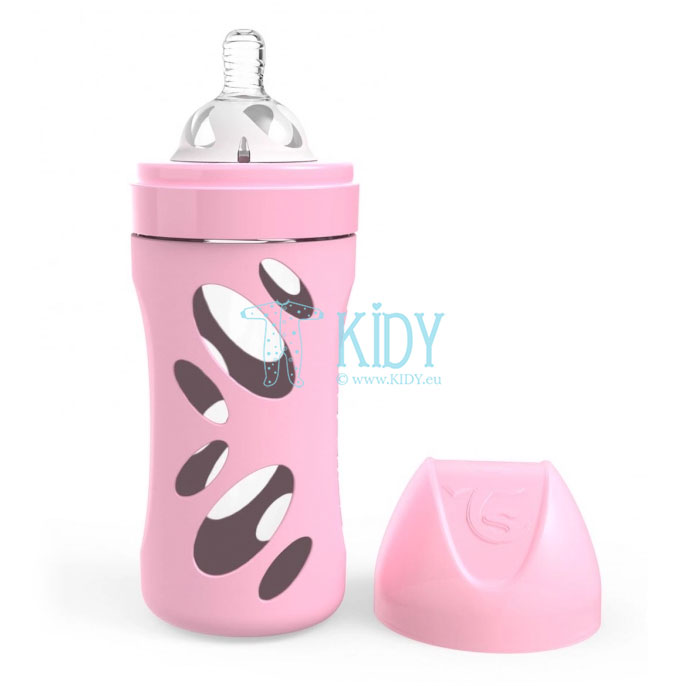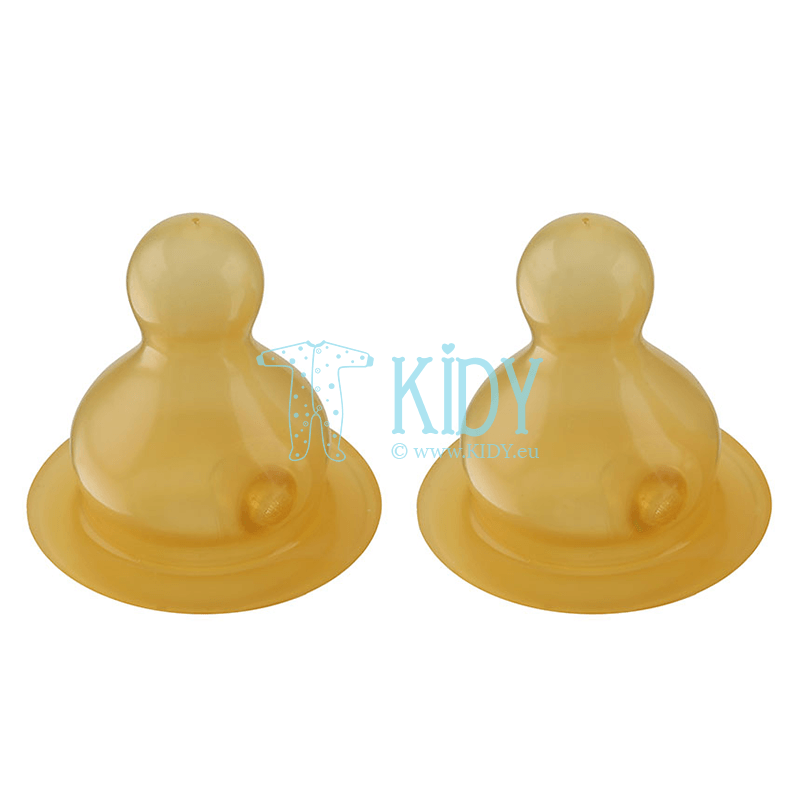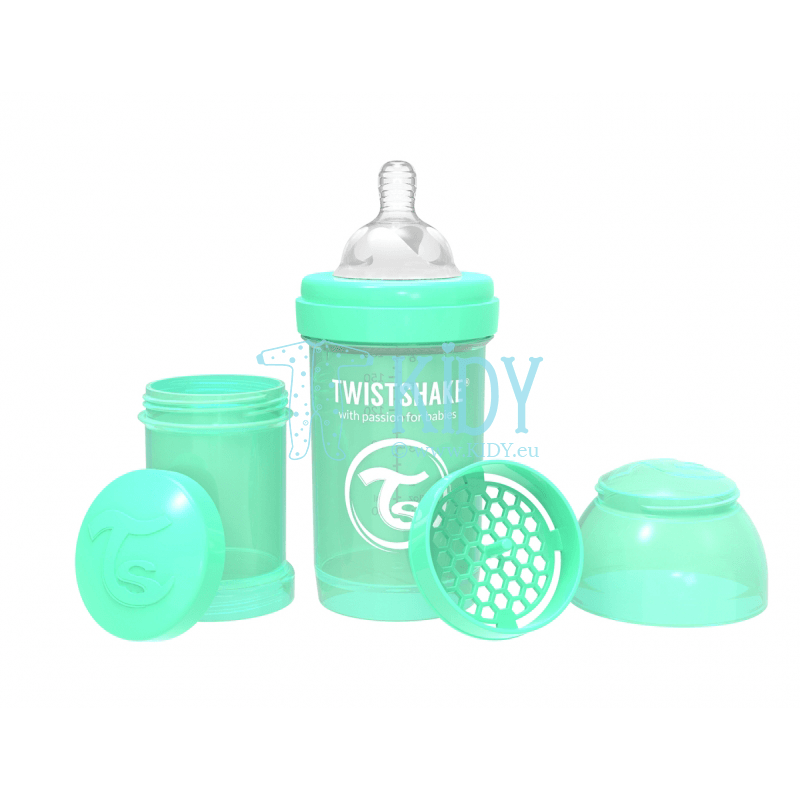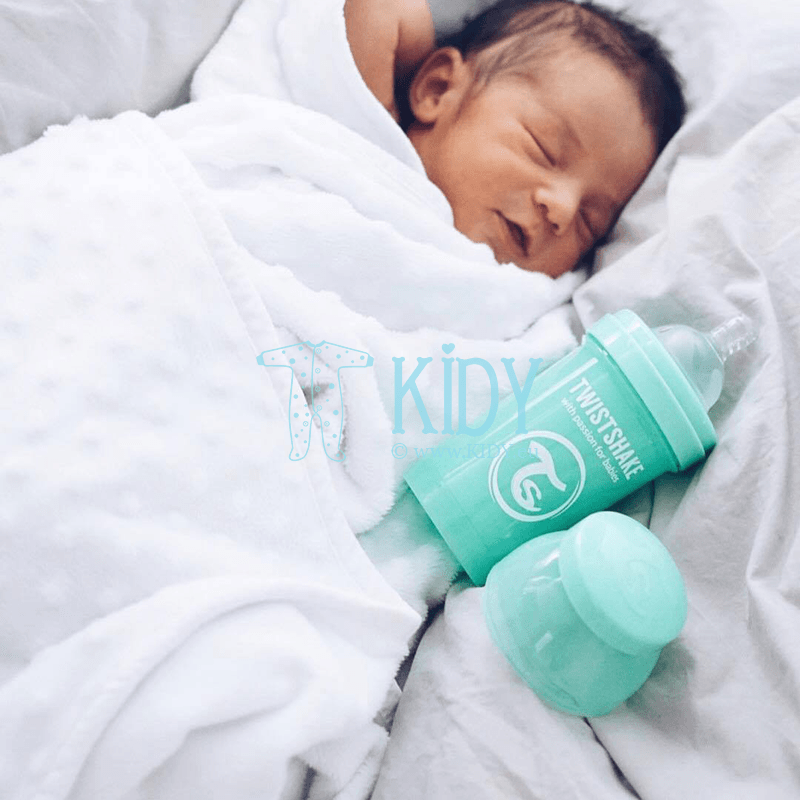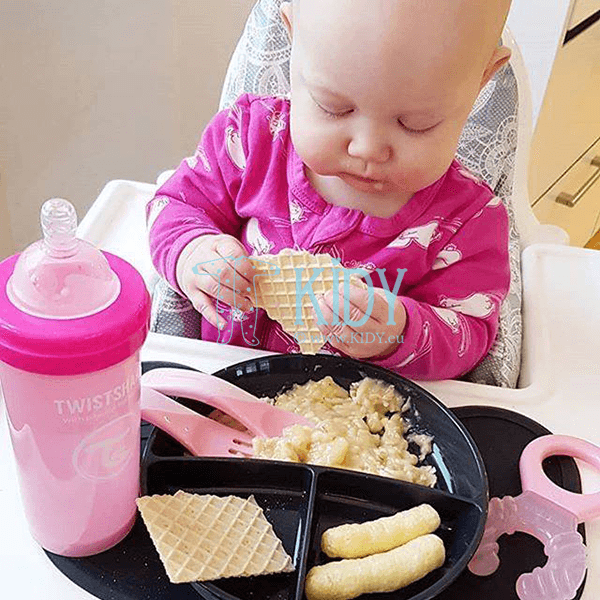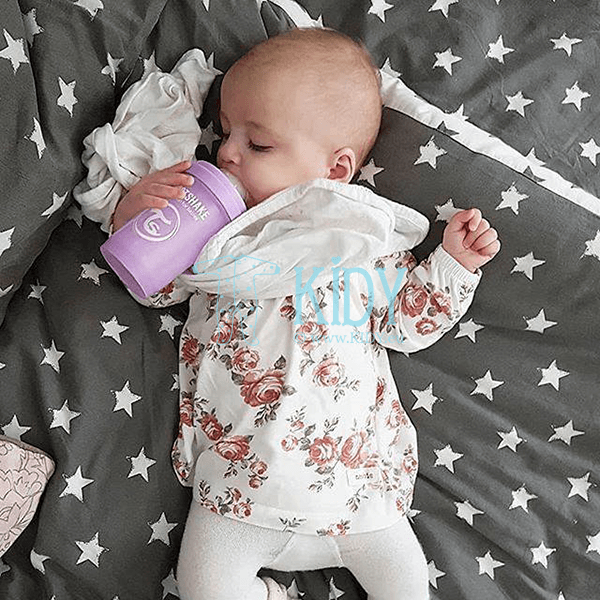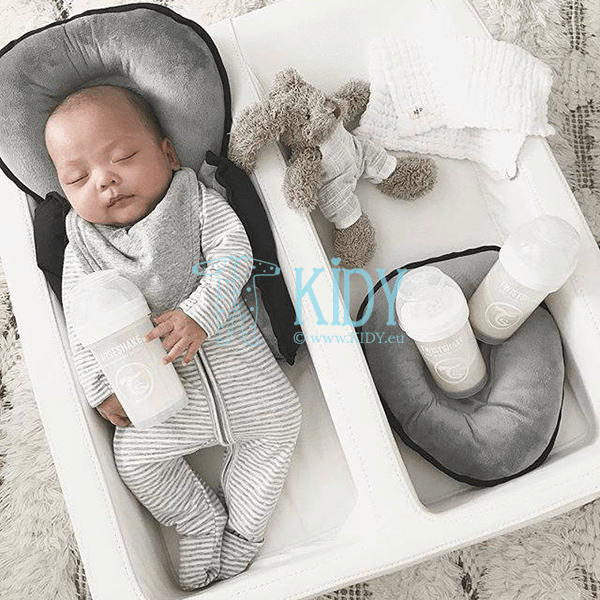Baby feeding bottles and teats: Types, classifications, care, manufacturers
Feeding bottles are the first dishware for newborn baby that is why they should be chosen with utmost earnest.
How should I choose infant feeding bottle?
A wide range of tableware offered in modern stores raises questions as to which baby feeding bottles are better. To find the answer to the question you need to understand what types and classifications of baby feeding containers are available.
By material, bottles fall into three types:
- Glass feeding bottles. Benefits of glass include: easy wash, it does not absorb odours, it is durable and does not collapse when being sterilized in hot water. Its fragility is the only disadvantage, being particularly evident when there is a small child whose hands may fail to hold heavy glass bottle at any moment.
- Baby plastic bottles stand out for their durability. When purchasing such goods you should pay attention to its components. Baby plastic utensils should not contain such harmful substances like Biphenyl A, phthalates, and PVC. The safest types of plastic are polyethersulfone and polypropylene.
- Silicone bottles are lightweight and durable. It is worth noting some disadvantages such as the bottle should not be boiled and it gets dyed with food.
Before you buy baby feeding bottles, it is important to remember that you will have to heat them often, so quality food plastic that withstands high temperatures would be the most appropriate option. Plastic tableware doesn’t stand out for longevity, so you will need to change a few of these bottles while your baby is growing.
By shape:
- Cylindrical containers feature the same circumference along entire length of the bottle. This shape is not much comfortable for a baby who is just learning to hold a bottle on his own. In addition, products of this type have narrow neck making it difficult to spoon formula powder into the bottle.
- Wide neck, narrow "waist". Often, these bottles have extra handles that enable little one to hold his bottle. A wide base of the bottle neck facilitates when spooning formula. This shape of container allows you to use it for more solid food such as porridge.
- O-shaped bottle (with a hole in the middle). This baby bottle is convenient for children (it's easy to hold) but it is difficult to clean, note for a drawback.
- Slightly forward tilted in valve bottles for anti-colic feeding bottles. This shape is suitable for newborns given accidental air swallowing while eating that causes infant to suffer from intestinal colic. Tableware featuring integrated anti colic system prevents this problem.
Volume:
- 90-100ml (bottles for newborns)
- 100-250ml (for kids of 3m+)
- 250-300ml (6m+)
Age limits depend on the amount of formula eaten at various stages of growth.
How many bottles does a newborn baby need?
Bottle-fed baby eats frequently. In addition to formula, baby bottles are filled with water. When you take into account that a newborn eats every 3-4 hours (at least 9 times per day), a new mum should have 4-5 bottles at hand. This number is needed to be able to sterilize and dry bottles between feedings as well as to store formula at night time.
A breastfed baby is ok with one bottle for water, whereas a bottle-fed infant needs 2-3 bottles.
What should I wash baby bottles with?
Newborn tableware should always be kept clean. Regular rinsing with warm water does not bring the desired result — formula remnants will still remain on the walls of the bottle and teat.
It is important to choose safe detergent that conforms to the criteria:
- designed for children’s dishware
- only natural substances
- easy to wash off
- quality certification
- “hypoallergenic” label
If parents failed to choose a suitable baby dish washing liquid, natural lye soap and baking soda will do.
How should I sterilize baby bottles at home?
The need for regular cleansing of baby bottles is caused by immature immune system of a newborn. Pediatricians recommend sterilizing baby utensils until heshe turns 1 year.
There are several ways to sterilize:
- Boiling. Bottles are placed in a container (pan or saucepan) and filled with warm water, then put on the fire. How long feeding bottles should be boiled depends on the material they are made of: plastic - 10 minutes; glass -15 min. Manufacturer sometimes marks the product cannot be boiled, then other ways can be used.
- Microwave oven sterilization. Put the dishes into a bowl filled with water and then set it in microwave for 5-10 minutes (depending on device capacity).
- Steaming. Put a colander with upside down bottles into a saucepan over boiling water. Sterilize for 5 min. Some time ago, glass bottles were placed on kettle spout for purification.
The most popular and safest method is purpose baby bottle sterilizer. The device is convenient in a way it allows young mum not to worry about dishware. When common boiling plastic containers can deform if required time was overseen, this is not the case when using the sterilizer.
Which teat is better when buying for newborn?
Feeding teat, alike baby bottle, comes in many shapes and types, which one you choose defines whether your baby finds it comfortable to eat his formula from a bottle.
Baby teats come in four basic shapes:
- Round. Classic type: top side looks like female teat; teat itself is prolonged with a wide base. This is all purpose shape; it fits all children of different ages.
- Orthodontic (flat-topped) is a teat, benefiting baby with the right dentition. This type will be particularly useful for mixed fed children.
- Anti-colic teat reduces air ingestion during feeding.
Newborn baby teats are made of:
- Silicone (strong, wear-resistant, easy to care for)
- Latex (soft; can cause allergies; short term of use)
- Rubber (hypoallergenic; wear out quickly; cheap products have a distinctive smell of rubber).
The most suitable option for a newborn will be silicone teats because they have no smell, are easy to sterilize and hypoallergenic.
Another criterion when choosing teats is flow speed and intensity that depend on the number and size of holes the product features:
- One hole teats are designed for infants
- Slow flow (2 holes) teats are for babies of 2m+
- Medium flow (3 holes) teats are for kids of 3m+
- Variable flow teats (slot-shaped hole with numbers to control the speed) is for children of 4m+
- Fast flow teats (4 holes) are for kids of 6m+
Many manufacturers mark the age group the product is intended for on the packaging. If you pick wrong flow teat that won’t meet age group your baby will fail to cope with the flow or will get tired trying to suck formula out while being still hungry.
Top list of the best feeding bottle manufacturers
In addition to shapes and types of products, responsible parents pay attention to the company that has released the product. This is a correct approach, because shady brands, in order to decrease costs, may add harmful impurities to bottle or teat composition, which subsequently get into baby body to poison the little one.
These are brands of the modern market that already gained appreciation of consumers:
- Twistshake (Sweden). Assortment of the brand includes anti colic plastic bottles with containers for formula and special mesh to prevent lumps. Twistshake feeding bottle has unique bright design, clear dosing scale, it is Biphenyl A and phthalates free. Silicone teats of the brand feature physiological shape with different flow speeds.
- Chicco (Italy). Latex orthodontic teats in physiological shape make the feeding process nice and easy. Glass heat-resistant bottles retain heat of formula for long.
- Tommee Tippee (England). Bottles of the brand have a unique anti colic system and temperature indicator, whereas silicone teat features real life breast shape thanks to innovative rings on it. Assortment of the brand also offers variable flow teats (speed of formula flow is adjusted by a slight twist of the bottle).
- Hevea Planet. All the products of the brand are manufactured of high-quality natural rubber. Hevea Planet baby bottles are made of fireproof glass. A rubber case is also in set with a bottle - a ball that will save the product in case of accidental fall and acts as a toy and teether. The teats feature classic round shape.
What is the right way to bottle-feed a newborn?
Technique of bottle feeding is simple, it is easy to remember:
- Keep the bottle at an angle so that the teat is completely filled with the formula
- No vertical position of the bottles is allowed, otherwise choking hazards for a baby;
- Keep baby’s head slightly lifted, not tilted back or sideways.
- The smaller the baby, the more often you should make short breaks for regurgitation.
- Watch the teat, it should not be flattened
At the end of each feeding give some water to a newborn and hold him vertically a couple of minutes to let swallowed air out.
Where can I buy feeding bottles and teats?
KIDY.eu online store invites all caring mums to buy beautiful, brand feeding bottles. You can also buy bottle teats and pacifiers by popular manufacturers. Affordable price, discounts, convenient payment options, and shipping to every corner of the globe will become a pleasant award to the quality buying.

